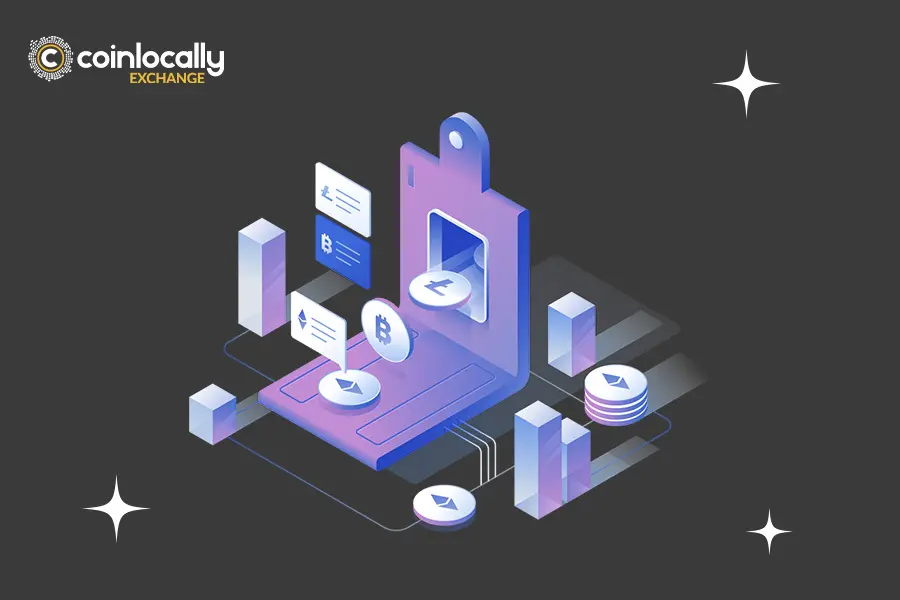Are you tired of spending too much time at work and still strapped for cash? Have you ever thought of making money without too much effort and hard work? Passive income is what you are looking for. You will earn money while you are sleeping! You wonder how? Well, we have gathered all you need to know about crypto passive income.
Table of Contents
Passive Income in a Nutshell
Passive income is money generated from ventures in which an individual is not actively involved. For the most part, all you need to do is invest your money or digital assets in a particular crypto investment strategy or platform and watch it generate profit.
In other words, any income that doesn’t require your direct exertion in finance is considered passive income. You initially make the initial investment, and from then on, you earn off it in perpetuity. To make it easier for you, think of it as investments like rental realty, government bonds, or fixed deposit accounts.
Passive income is quite important to investors because it takes away the uncertainty in investment. It is also a transparent strategy for making wealth all the time, and famous investors like Warren Buffet advocate for it.
How to Make Passive Income From Cryptocurrencies?
Crypto could be a relatively new asset class that is understood for its excessive volatility. Cryptocurrencies are presently trading 30-40% off their most up-to-date highs. Such corrections are ordinary.
Given this volatility, it is understandable to question the feasibility of passive income strategies in such a market. First of all, you need to know how the process of making crypto passive income works.
Crypto passive income has emerged as a popular strategy for growing a cryptocurrency portfolio without significant effort. The rise of DeFi has expanded opportunities beyond staking and mining to include yield farming.
Despite market fluctuations, the underlying goal remains the same: earning while minimizing active involvement.
The Evolution Of Crypto and the Rise of Crypto Passive Income
To understand the idea of crypto passive income, one must first grasp the evolution of cryptocurrencies:
- Bitcoin (BTC), the primary successful cryptocurrency, was designed to replace the monopolization of currency by the central banking system. Nevertheless, Bitcoin did not quite replace the banking system, and that’s because there is a lot more to legacy banking than just currency issuance.
- Ethereum came shortly after Bitcoin’s launch, which built on the idea of Bitcoin, but targeted the finance industry even more deeply. Through Ethereum, developers could take just about any banking service and decentralize it.
- Ethereum‘s emergence gave birth to decentralized finance (DeFi), a rapidly evolving sector of blockchain-based financial technologies. DeFi democratized traditional financial services like lending, making them accessible to everyone. It also introduced innovative ways to generate passive income through cryptocurrencies.
How To Earn Passively in Crypto
Here, we will elaborate on the investments and strategies that even newcomers can use to earn passive income with cryptocurrency.
1. Staking
Staking is the method of using your cryptos to become a network validator and help make sure the network runs efficiently. It is utilized in Proof-of-Stake cryptos and is effective in securing such networks.
For example, if someone tries to attack Proof-of-Work cryptos like Bitcoin, they have to raise 51% of the overall hash power employed in mining, which is not easy for extensive networks like Bitcoin.
On the other hand, to attack Proof-of-Stake cryptos, one would need to buy 51% of the entire cryptos in circulation. Essentially, the more people stake, the more secure and decentralized the network evolves.
Staking Benefits and Drawbacks
Let’s take a look at the pros and cons of staking as a method of passive income.
Advantages
- Ease of Use: Staking is relatively simple and can often be done directly on exchanges like Binance or through cryptocurrency wallets.
- Delegated Staking: For those without technical expertise, delegated staking allows you to participate in staking pools. Cardano is a popular example of a cryptocurrency that supports delegated staking.
Risks
- Technical Risks: Staking involves technical risks, such as slashing penalties, which can result in the loss of staked funds.
- Market Volatility: The value of your staked cryptocurrency can fluctuate which will impact your potential returns.
- Regulatory Uncertainty: Changes in regulations can affect the legality and profitability of staking.
To fully understand the risks and rewards of staking, it is essential to be familiar with terms such as slashing, mining, lending, crypto savings accounts, decentralized gaming, masternodes, HODL, and airdrops. We will explain these concepts in more detail below.
Slashing
Slashing entails the failure of staked cryptos if one does not adhere to the staking rules. The thought is to confirm that each node is always behaving correctly for the most specific attractions of the network.
While slashing mechanisms improve network efficiency, they pose a significant risk to investors who are unaware of them. Unintentional downtime, for example, can lead to the loss of staked cryptocurrency.
Price Fluctuation
Price fluctuations during the lockup period are another risk of staking. Cryptocurrencies tend to losses of over 50%, don’t seem to be remarkable, and fluctuate quite heavily.
In such cases, the staking prizes would be inconsequential relative to the overall loss.
2. Mining
Mining is a popular method of earning passive income in the crypto world that involves the use of computers to solve complex mathematical problems and generate new cryptocurrencies.
Mining is regarded as a passive income type because the sole investment you create is to shop for the mining supplies. After all, you get to earn passively from every coin you bring into existence.
Mining altcoins typically requires a GPU-powered computer. However, mining major cryptocurrencies like Bitcoin and Ethereum demands specialized hardware known as ASICs.
By solving complex mathematical problems with these machines, miners contribute to the network and earn rewards in the form of newly minted coins.
Crypto Mining Risks
One of the primary risks associated with ASIC mining is rapid obsolescence. As the mining difficulty increases, the computational power required to mine new coins also increases. This will eventually result in quickly rendering older mining hardware obsolete.
3. Cloud Mining
Cloud mining offers a simpler approach to passive income in the crypto world. By investing in cloud mining contracts, you essentially rent computing power from a mining operation.
This is a viable option for those who lack the resources to invest in their own mining hardware. However, cloud mining often involves high fees, long lock-up periods, and the risk of reduced profitability over time.
Cloud Mining Risks
One of the biggest risks in cloud mining is scams. Many fraudulent companies use a pyramid scheme model, paying early investors with funds from new investors.
If you choose cloud mining, consider reputable providers like Genesis Mining and HashNest. While they may not offer the highest returns, they are generally considered safer options.
4. Lending
Crypto lending is a popular method of earning passive income by lending your cryptocurrency to others and receiving interest on your investment.
It is a relatively straightforward process that can generate additional returns on your crypto holdings.
Nevertheless, unlike a bank, this lending happens in a decentralized environment. There are various ways through which you will be able to make money passively by lending crypto. Some are P2P lending, Lending to Margin Traders, and DeFi Crypto Lending.
P2P Lending
Peer-to-peer (P2P) lending platforms like BTCPop allow you to directly lend your cryptocurrency to borrowers.
You can negotiate interest rates and terms with individual borrowers. However, this approach carries the risk of default since borrowers may not repay the loan.
Lending to Margin Traders
One of the most valuable paths to earn crypto passive income is lending to margin traders. By lending your crypto to traders who need additional leverage, you can earn interest.
Platforms like Bitfinex make this process simple, allowing you to deposit your crypto and select the best lending rates.
However, it is important to be aware of the risks. One of its most significant risks is that the exchange can get hacked. If this happens, there could also be little you’ll be able to do to salvage your investment.
DeFi Crypto Lending
DeFi Crypto Lending is lending your crypto in an exceedingly decentralized environment. Platforms like Yearn Finance and Compound enable you to earn passive income by lending your crypto to others.
This liquidity you provide helps facilitate trading on decentralized exchanges, and in return, you earn interest.
Unlike in centralized banking, where an entity decides what proportion you will earn from your deposits, DeFi rates are purely determined by the market.
This means that interest rates can fluctuate based on supply and demand which are likely to lead to higher returns.
5. Crypto Savings Accounts
Besides lending, some cryptos allow you to earn interest on savings. They operate like a bank account, albeit in an exceedingly decentralized environment. Unlike staking or crypto lending, you will be able to get a refund at any time you like.
A simple example of a crypto bank account is the Celsius network. With Celsius, you deposit crypto and begin earning interest immediately.
Others that supply similar services include Nexo, Hodlnaut, and Ledn. Similar to other methods, this passive income option has some risks.
6. Decentralized Gaming
You purchase items in a Dapp game and earn through its value appreciation. The more gamers need that item, the higher its value gets.
The best part is that you do not have to be a gamer. You only need to find a preferred game on Ethereum or other platforms and buy some collectibles.
One risk of in-game asset investing is purchasing items that lose value over time. To avoid this, you should understand the game’s economy and identify assets with potential long-term value.
7. Masternode
These are some nodes that help secure the network. Unlike the traditional Proof-of-Stake node, a Masternode does not have to do anything special. All that is needed is for the investor to possess a selected number of coins, and then lock them up.
Dash is a well-known example of a Masternode network. By holding 1,000 Dash coins, you can become a Masternode and earn passive rewards.
However, you must be aware of the risks, particularly the potential for price fluctuations. If the value of Dash declines, your potential losses could outweigh your earnings.
8. HODL (Hold On for Dear Life)
Another easy way to earn a passive income in crypto is by holding on to your coins. Cryptocurrencies are constantly increasing (long-term), and quickly holding your coins should provide you with a decent return over time.
For instance, someone who bought Bitcoin in the early 2010s and never sold has made much passive money.
Besides the long-term value appreciation, HODLing encompasses several other benefits that each one adds up to long-term value growth.
Advantages of HODLing
HODLing is a simple yet effective strategy for growing a cryptocurrency portfolio, especially when combined with other passive income techniques.
- Hard Fork Rewards: When a cryptocurrency undergoes a hard fork, investors often receive additional coins. For example, Bitcoin holders received Bitcoin Cash and Bitcoin SV coins during their respective hard forks.
- Potential For Long-Term Growth: By holding cryptocurrencies for an extended period, you can benefit from potential price appreciation over time.
- Passive Income Opportunities: While not directly related to HODLing, certain cryptocurrencies offer staking rewards or dividends that will help you earn passive income on your holdings.
9. Airdrops
Exchanges and a few wallets do regular crypto airdrops. Usually, you must have a wallet address with the deal doing the airdrop, and you will receive free coins.
You don’t need to do anything to profit from airdrops, and the exchange doesn’t even ask you for your private keys to do the airdrop.
The only risk with airdrops is that scammers use this method a lot. To avoid falling for scams, ignore messages asking you to send your private keys to urge airdrop.
The rule of thumb is that genuine airdrops don’t require sharing your private keys.
Top 3 Platforms to Earn Crypto Passive Income
Having hinted at them previously, here are three platforms you ought to consider for crypto passive income:
Nexo
Nexo is a platform that lets users lend or borrow crypto or fiat currencies. When borrowing, you must provide crypto as collateral, and the loan is overcollateralized to protect against market fluctuations.
As a lender, you can earn an Annual Percentage Yield (APY) of up to 6% on your crypto deposits, with higher rates offered for those who choose to earn interest in NEXO tokens.
Stablecoins such as USDC, USDT, and TUSD gain 12% interest. But this is not all. NEXO is a dividend-earning cryptocurrency that rewards stakers yearly for holding NEXO. That’s why, it is considered one of the simplest cryptos to earn passive income from.
BlockFi
Same as Nexo, BlockFi’s model relies on lenders. BlockFi incentivizes its users with an 8.6% APY on crypto (but interests vary, for example, USDT has an APY of 9.6%). Interest is compounded and accrues daily with monthly payouts.
Celsius
Another crypto lending platform on our list is Celsius which provides a broader range of crypto options. Users can earn up to 17.78% after they reach the platinum level.
Stablecoins like USDT and USDC have an APY of 12.65%, and choosing rewards in Celsius’ native crypto increases interest.
Crypto Passive Income Tax Implications
For maximum income, consider reducing your tax. Institutions like the IRS (the US specific) track your income and need your returns on crypto profits.
To avoid any penalties, file your returns accordingly. You will also increase your earnings by using tax reduction measures.
How Sustainable is Crypto Passive Income?
Blockchains offering passive income as either mining or staking have to provide additional products and services to remain profitable, relevant, and sustainable.
Within the short term, these rewarding models are sustainable. Nevertheless, increasing market participation and prizes will dilute the token valuation of that platform.
Offering more products diversifies a platform’s revenue stream and helps to maintain a healthy token value.
Can We Earn Crypto Passive Income with Bitcoin?
The short answer is yes. You can achieve Bitcoin passively by crypto lending, and platforms such as BlockFi and Nexo will reward you for lending your Bitcoin in Bitcoin.
Conclusion
Now that you have come to the end of this blog post, you know how to earn passive income.
The methods you learned to earn passively in cryptocurrencies and benefit from them will help you work less and gain more. Remember that for maximum revenue, you can consider reducing your tax.




